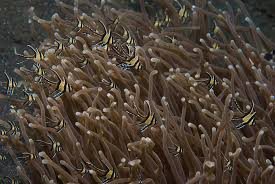Dragons (lóng, 龙) have long been an integral part of Chinese mythology, culture, and artistic expression. Traditionally associated with strength, wisdom, and cosmic power, dragons have evolved beyond their mythological roots to find a place in modern literature and contemporary Chinese society. Today, dragons symbolize not only cultural identity and heritage but also the values of resilience, national pride, and transformation in an era of rapid modernization.
In this article, we will explore how dragons are depicted in modern Chinese literature, their role in shaping contemporary narratives, and their symbolic significance in the social and cultural landscape of China.
1. Dragons in Modern Chinese Literature
1.1. The Transformation of Dragon Symbolism in Literature
Historically, Chinese dragons were seen as benevolent beings, often associated with emperors, celestial forces, and prosperity. However, in modern literature, dragons have taken on new and diverse meanings, reflecting the complexities of contemporary Chinese society.
Some of the most prominent themes in modern literary works that feature dragons include:
- The Dragon as a Symbol of Resistance: In stories set against the backdrop of historical conflicts, dragons are often used to represent the spirit of perseverance and national strength.
- The Dragon as a Metaphor for Change: With China’s rapid modernization, dragons sometimes symbolize the clash between tradition and progress.
- The Dragon as a Guardian of Cultural Heritage: Some novels depict dragons as protectors of ancient wisdom, reminding modern readers of their roots.
Modern authors reimagine the dragon in ways that bridge the past and present, making it a compelling literary figure for contemporary audiences.
1.2. Dragons in Contemporary Fantasy and Science Fiction
With the rise of fantasy and science fiction literature in China, dragons have found a renewed presence in speculative fiction. Chinese fantasy novels, known as xianxia (仙侠) and wuxia (武侠) genres, frequently incorporate dragons as powerful beings that influence the fate of heroes.
Examples of how dragons appear in modern literature include:
- Xianxia and Cultivation Novels: In many online serials and popular novels, dragons are portrayed as divine creatures guiding martial artists and cultivators on their spiritual journeys.
- Science Fiction Interpretations: Some futuristic novels reinterpret dragons as mechanical entities or artificial intelligence, blending mythology with technology.
- Magical Realism: In contemporary literature, dragons sometimes appear as manifestations of human emotions or societal struggles, giving them a deeply symbolic role.
By integrating dragons into these genres, modern writers reinvent traditional mythology, making it relevant for younger readers in the digital age.
2. Dragons as National and Cultural Symbols in Chinese Society
2.1. The Dragon as a Representation of National Identity
The phrase “Descendants of the Dragon” (龙的传人, Lóng de chuánrén) is widely used to express Chinese national pride. This concept is frequently referenced in literature, music, and public discourse, reinforcing the dragon as a symbol of unity and resilience.
- Patriotic Literature and Poetry: Many contemporary Chinese poets and authors use dragon imagery to symbolize the strength and spirit of the Chinese people.
- Political Discourse: The dragon is sometimes used in rhetoric to describe China’s rise on the global stage, emphasizing progress and renewal.
The dragon’s association with national identity makes it an enduring emblem in both literature and public consciousness.
2.2. The Dragon in Social Movements and Cultural Revival
As China undergoes rapid societal changes, many cultural movements have sought to revive traditional symbols, with dragons playing a central role.
- Neo-Confucian and Taoist Revivals: Some modern thinkers use dragon symbolism to promote a return to traditional values, blending ancient wisdom with modern ethics.
- Environmental and Ecological Movements: In some cases, dragons are reimagined as protectors of nature, representing harmony between humanity and the environment.
- Youth and Pop Culture: The younger generation embraces dragons as icons of both tradition and rebellion, incorporating them into fashion, music, and online culture.
Through these movements, dragons continue to evolve as symbols of cultural preservation and transformation in Chinese society.
3. Dragons in Popular Media and Modern Storytelling
3.1. Dragons in Chinese Cinema and Television
With the rise of Chinese cinema and TV dramas, dragons have found a place in visual storytelling, reinforcing their literary and cultural significance.
- Historical Dramas: Many period dramas feature dragons as celestial figures influencing the fate of emperors and warriors.
- Fantasy and Martial Arts Films: Movies like Crouching Tiger, Hidden Dragon (卧虎藏龙) and modern fantasy epics depict dragons as both mystical beings and metaphors for human struggles.
- Animated and Digital Media: Chinese animated films, such as White Snake (白蛇) and Big Fish & Begonia (大鱼海棠), incorporate dragon mythology in new and creative ways.
These adaptations demonstrate how dragons remain relevant in modern entertainment, attracting audiences worldwide.
3.2. Dragons in Global Literature and Cross-Cultural Influence
Chinese dragons have also inspired Western authors and media creators, leading to cultural exchanges that shape new interpretations of dragon mythology.
- Western Fantasy Literature: Chinese dragon mythology has influenced fantasy novelists, who incorporate elements of Eastern dragon lore into their works.
- Hollywood Films: Movies such as Mulan (both the animated and live-action versions) and Raya and the Last Dragon feature dragons inspired by Chinese legends.
- Cross-Cultural Storytelling: Collaborations between Chinese and international writers result in novels and comics that blend Eastern and Western dragon archetypes, creating a more diverse literary landscape.
This global exchange highlights how dragons serve as a universal symbol, adaptable to different cultural and literary traditions.
4. The Future of Dragons in Chinese Literature and Society
4.1. The Role of Dragons in Contemporary Political and Economic Narratives
As China continues to develop economically and politically, the dragon remains a symbol of power, ambition, and destiny. Some modern writers use dragons as a literary tool to critique or support socio-political changes, offering insight into China’s evolving self-image.
- Dragons in Economic Literature: Some economic writers liken China’s rapid growth to the “awakening of the dragon,” emphasizing prosperity and transformation.
- Dragons in Political Discourse: Literature exploring China’s global role often uses dragon metaphors to discuss diplomacy, strength, and leadership.
4.2. The Evolution of Dragon Symbolism in the Digital Age
With advancements in technology and artificial intelligence, dragons are taking on new forms in digital storytelling:
- AI-Generated Literature: Some online platforms use AI to generate dragon-themed stories, merging technology with ancient mythology.
- Virtual Reality and Gaming: Dragons are central figures in Chinese video games, symbolizing power and strategy.
- Social Media and Internet Culture: Memes, digital art, and online discussions about dragons reflect their continued relevance in contemporary culture.
As China moves into a technological future, dragons remain a timeless symbol, continuously adapting to new cultural landscapes.
Conclusion
Dragons have undergone a remarkable transformation in modern Chinese literature and society. From their traditional roles as celestial beings to their contemporary depictions in literature, cinema, and global storytelling, dragons continue to inspire, adapt, and evolve.
In modern China, the dragon is more than just a mythical creature—it is a representation of identity, strength, and the dynamic balance between tradition and progress. Whether in literature, national discourse, or digital media, the dragon remains a powerful and enduring symbol, ensuring its place in both the cultural imagination and the collective consciousness of the Chinese people.










